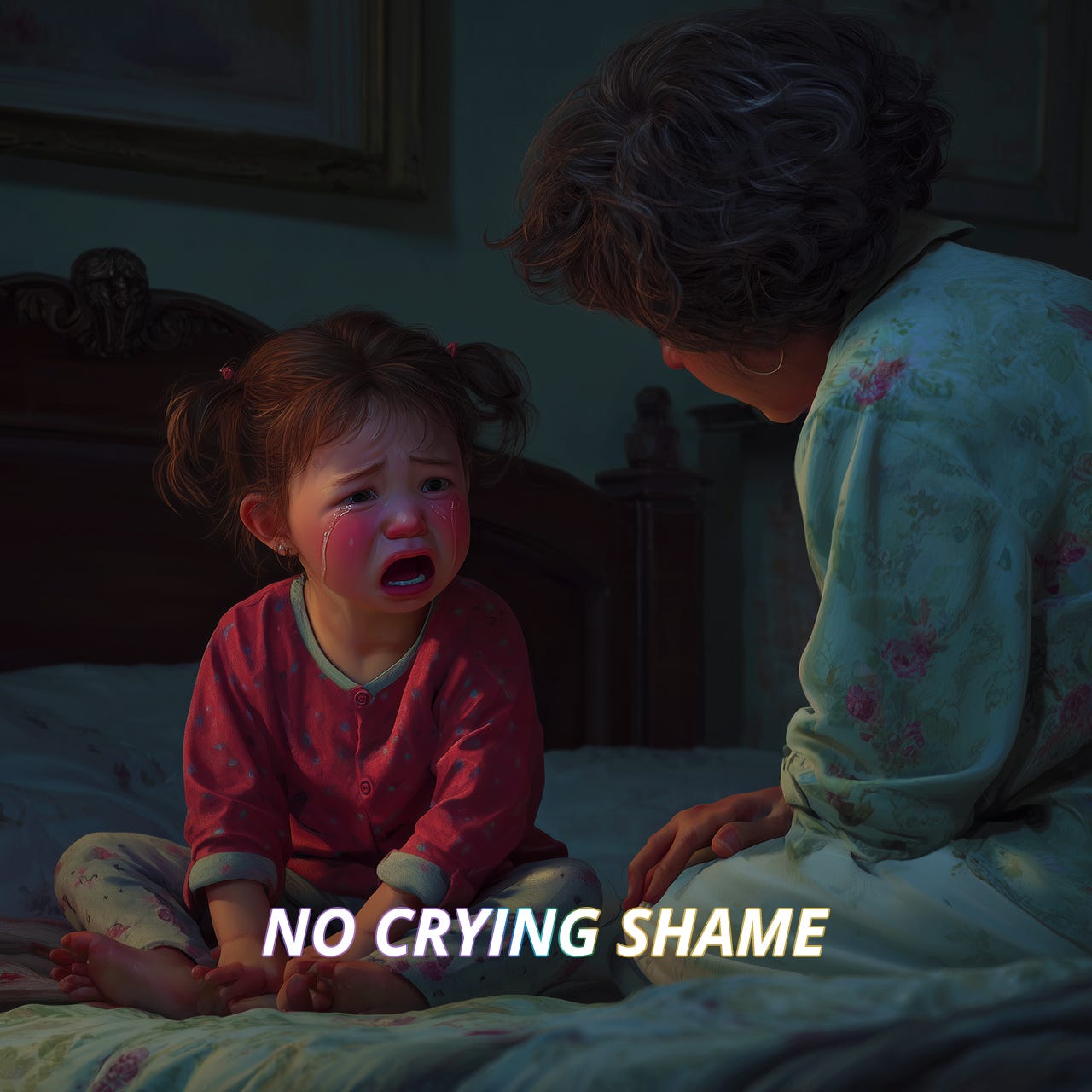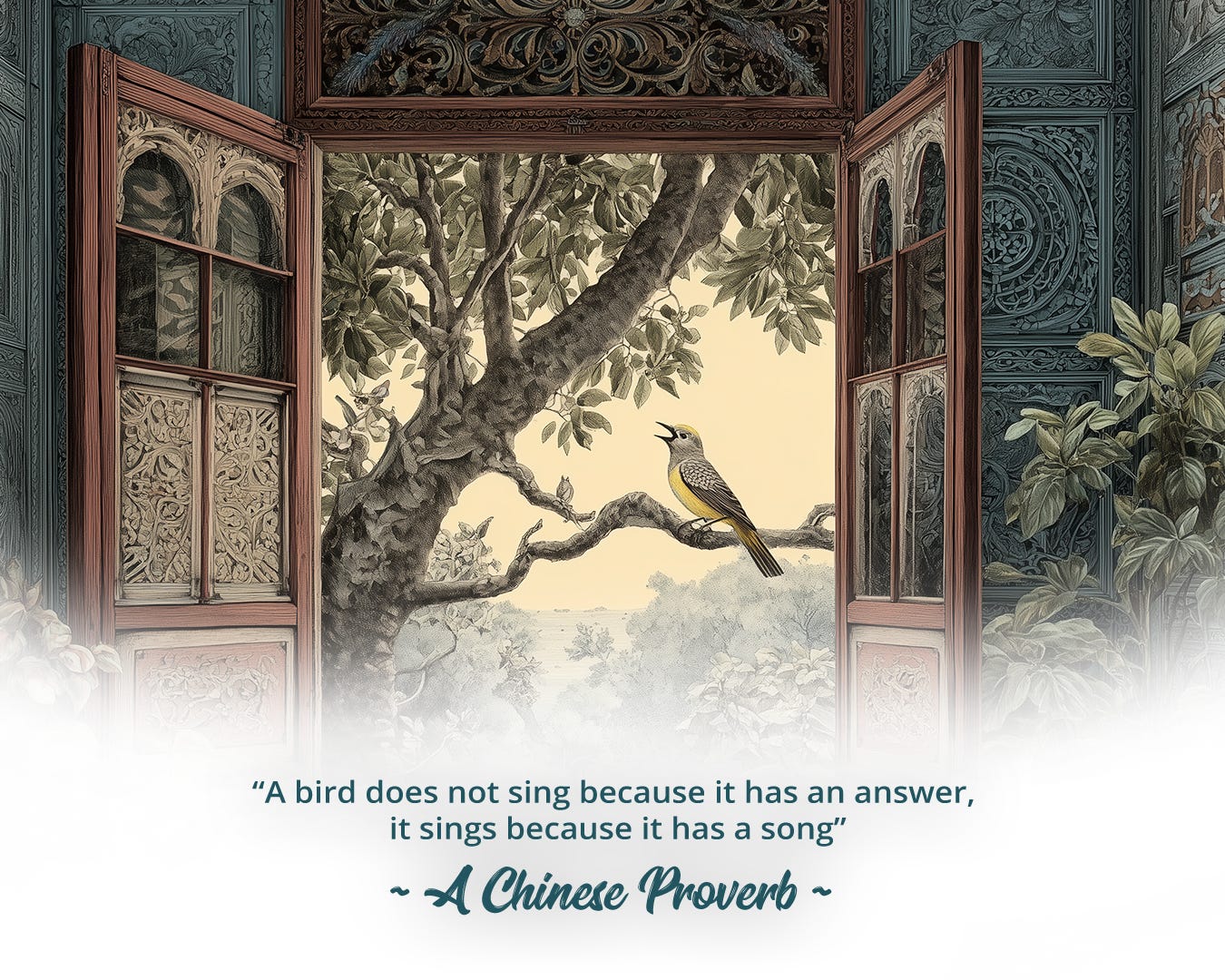No crying shame
A crying toddler with no clue why to crying adults that squirm at the loss of control. These are emotional expressions that, if we could accept and be present to, may teach us more than we know.
Enabling The How #228. Reading time: 4 minutes, 26 seconds
All was quiet. Leah was down for her afternoon nap. Staff were having lunch outside. The ambient music from the sunroom could be heard through the half closed office door over the tick-tick of fingers on keyboards. Chantal sighed, there was time for her to complete the report due for the work done for the university.
A wail emanated from the room next door. Too soon. Leah needed to sleep longer. Chantal launched herself out of her chair, leaving the report incomplete on her screen.
“What’s going on, angel?” she asked, reaching for the red faced toddler rolling around the bed.
Chantal tried to soothe her and get her back to sleep. Leah was having none of it. She was beside herself. But why was she crying? Had she woken from a bad dream? Was she wanting a mama who was not there? Who could tell? Certainly not a pre-verbal 17 month old.
Once we took her out of the bedroom she quietened. She hiccupped a few times and wiped her eyes. A pair of sparrows tap-tapped at the large window of our sunroom. They were attracted by the reflections and wanted to get in. “Bir, bir,” Leah said, pointing at them. Thus distracted, she was happy to be put down.
Crying is communication
Crying is an infant’s first means of communication. We expect babies to cry, although it creates a great deal of anxiety if we cannot interpret the signals quickly enough. Something in us does not like the sound of crying. Instinctively we want to soothe and settle our babies.
As we learn more words and are able to communicate our needs, we cry less. As adults we are really not expected to cry much at all. Not in our culture. We are expected to suck it up and get on with it. And yet there are times when crying is the best thing we could do.
In our coaching work we are often faced with crying adults. The crying is an emotional release, often sudden and always unexpected. The client, stricken at their loss of control, apologises:
“I’m sorry, I don’t know why I am crying.”
There may be embarrassment. It’s difficult to know how to handle oneself in this messy state in front of another person. Mostly because we know how uncomfortable it may be for the one witnessing the tears.
It can be triggering seeing another’s distress. It may even make you want to cry too. We know that yawning can be contagious but so can crying. Those damn mirror neurons at work again.

Fix and rescue
New coaches that Chantal supervises are often at a loss:
“What do I do if my client starts crying?” they ask, as if it is their responsibility to do anything at all.
It is in our nature to want to “fix” though. So when the crying starts we are hard pressed not to jump to the rescue. If we don’t know how to come to the person’s aid it can activate a stress response in us.
When Chantal cries she just wants to be left alone for a while. Matthew, on the other hand, wants to reach out to hug her better.
Crying, like the expression of any other emotion, is data. It is information. It’s not always the same message. We can cry from frustration, anger or sadness, we can cry from joy too. We can cry and not really know why.
It’s all okay. It’s all welcome.
No crying shame
It is the quality of our attention that lets us hold the space. It’s our ability to stay present to the discomfort being expressed, and felt, that makes the difference. As much as we love to sort, and fix and work out why, sometimes we cry because we have a cry inside that needs to be cried out.
If we allowed the tears to run as we huff and puff through the sobs and don’t ask the question “Why?” maybe we would find that it doesn’t matter. That we feel so much better, lighter, ready to take on the next challenge.
No crying shame. No judgment, no embarrassment, no guilt, no holding on or hiding it. Just the ability to let it all out. To just be there and cry.

Pay attention
We don’t know why Leah was so upset. We can make up a whole host of stories. Just like we do when we see other people cry or express their emotions.
We don’t know why the sparrows persist day after day to tap at the window. Are they trying to tell us something or is it simply a bird brain mistake that the reflection in the window is another bird or a tree to nest in.
We have been visited recently by an owl. Difficult to see in the dark, we hear the soft hoot coming from our old oak. There is an owl house in the tree. Installed five years ago it has lain empty. We are hopeful that the owl may choose to nest there.
The visit of an owl is seen as auspicious. Owls are seen as spiritual symbols of wisdom, intuition and transformation. They are said to indicate a need to pay attention to our inner voice and hidden truths. To pay attention, that again.
Whatever the message, however given and received, it is up to us to pay attention. To be present to what is. The unfolding, the letting go, the expression of life, love and hope.
Until next time.
Yours in feeling,
Matthew & Chantal
IMAGE CREDITS FOR THIS ISSUE: 5TH PLACE




